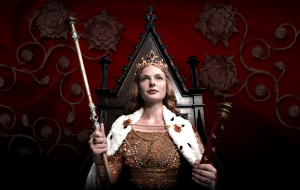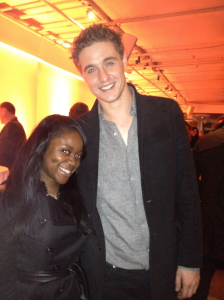Giles Cottle, Head of Strategy at Freesat, reports in from the Consumer Electronics Show.
 For those of us involved in the techier end of the TV industry, the second week in January means just one thing – putting off the post-Christmas diet for another week and hopping on a plane to the vast consumer electronics funfair that is the Consumer Electronics Show (CES) in Las Vegas.
For those of us involved in the techier end of the TV industry, the second week in January means just one thing – putting off the post-Christmas diet for another week and hopping on a plane to the vast consumer electronics funfair that is the Consumer Electronics Show (CES) in Las Vegas.
CES is the world’s largest consumer technology show and the launching pad for the sublime and the ridiculous…including any number of weird and wonderful gadgets and technologies. This year the show promises to be full of wearable technology, in-car audio and automation, fridges that talk to you and even a smart crock-pot.
Freesat is already over here in Vegas, and, if we can pull ourselves away from talking cars and fridges, will be keeping a close eye on what’s new and exciting in the TV world. This year, Mediatel has asked us to report back on the best of what we see, spot potential future trends and bring back one of those crock pots.
Across the 1.9 million square feet (over 5000 football pitches) of the exhibition we are going to be looking around for the following:
TVs, TVs, TVs
Freesat is, obviously, a TV platform, so not surprisingly we love looking at new TVs… Among some of the potential highlights – bendy TVs” from Samsung (if Michael Bay ever lives it down); A new Smart TV from LG built on Web OS, which was previously a once promising smartphone OS that could have challenged Google’s Android platform; we also understand that Roku (which Sky has a stake in) will be integrating their software, which allows viewers to stream online video services to the TV without a PC or a games console, into Smart TVs from leading Chinese manufacturers HiSense and TCL.
4K – or ultra High Definition
It’s pretty clear that the next generation of TV displays is here in the form of ‘4K’ is here to stay: 4K offers four times the picture quality of current HD TVs. The question is how quickly the entire industry – broadcasters, platforms, manufacturers and, of course, viewers – do – or don’t – start to adopt it. TVs that support 4K remain expensive for the mass market – we’ll be looking to see if TV manufacturers are closer to putting the technology into devices at a price point that will appeal to an audience other than those with a large wallet (and living room wall)
Dongles
Google’s Chromecast dongle – which allows users to share video from their smartphone to the TV – has received huge praise since it launched last year. CES will see several other providers, including Netgear, trying to plough the same furrow. We await to see if anyone can launch a “Chromecast-killer” at CES.
What the US TV operators are up to
Freesat is always interested in checking in with our US-based peers, including the likes of Dish, Comcast and DirecTV. Previous years have seen Dish using CES to launch its whole-home DVR (recording) product as well as unveiling the controversial ad-skipping feature for recorded programmes. This year, Dish has already announced a ’box-less’ version of their service for Smart TVs – we’ll see what else they have in store this week.
We’ll be at the show for the rest of the week – so if you’re keen to know more about what’s going on over here, follow us on Twitter @freesat_tv, plus we’ll be at Mediatel’s CES Debrief on the 21st January 2014.








